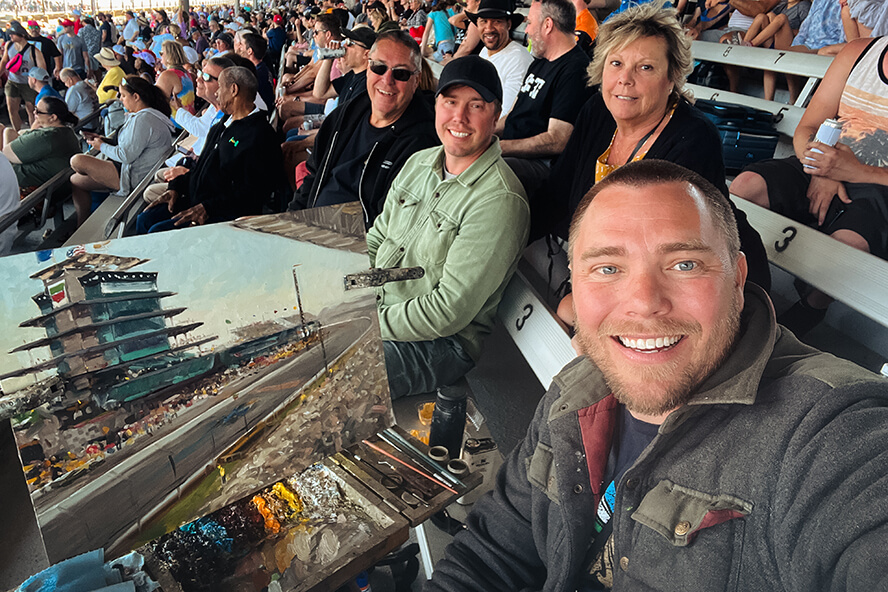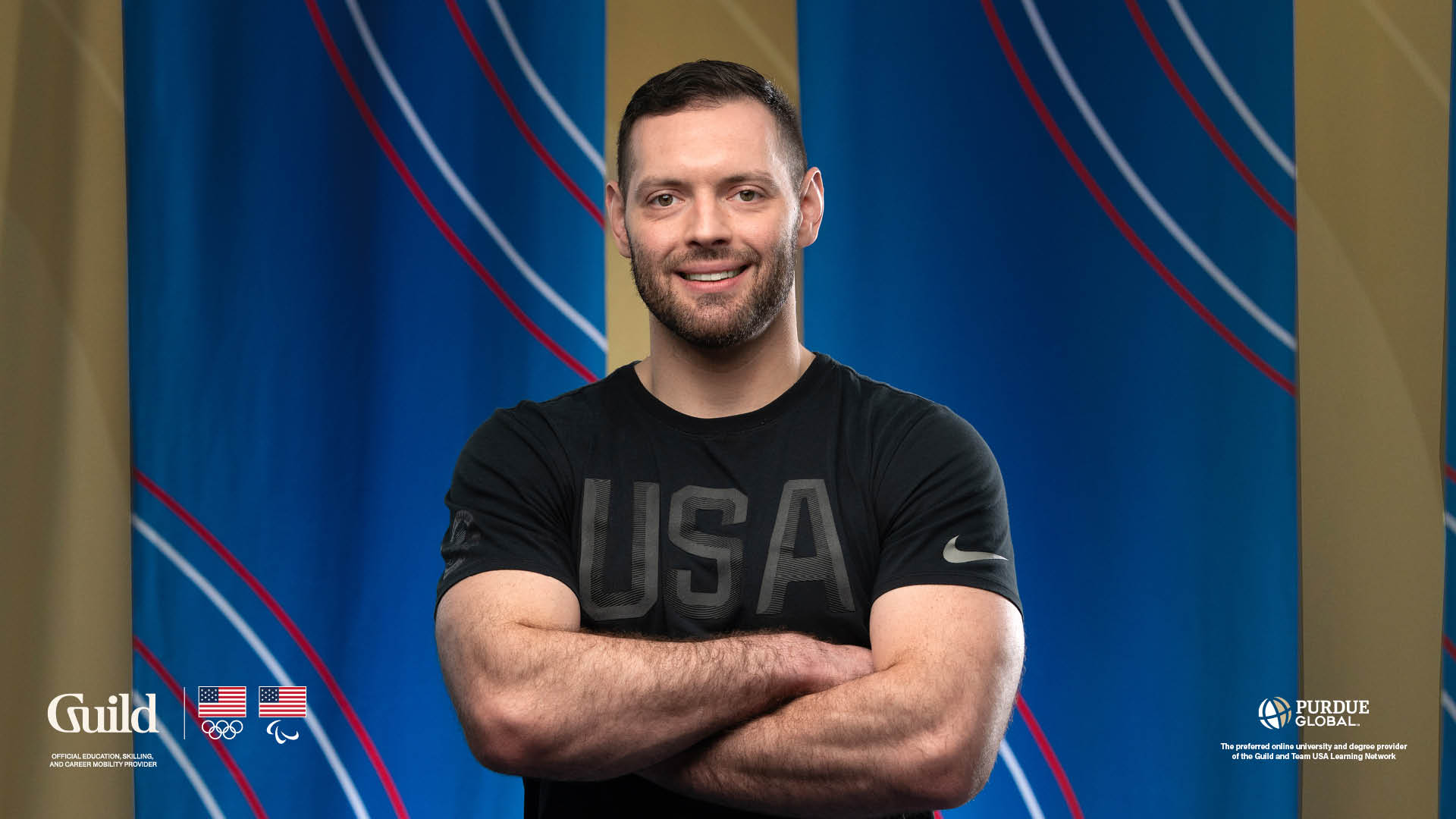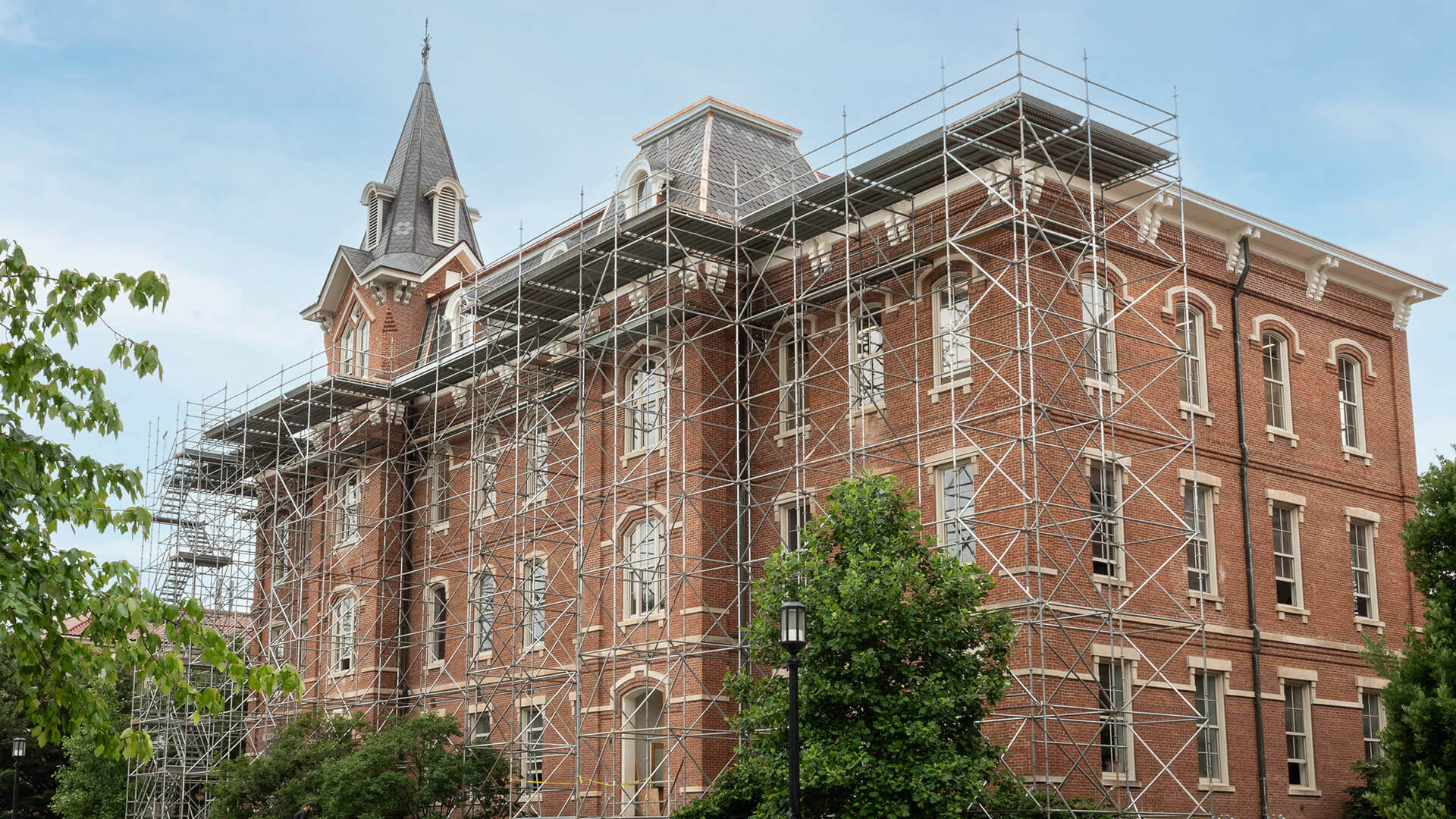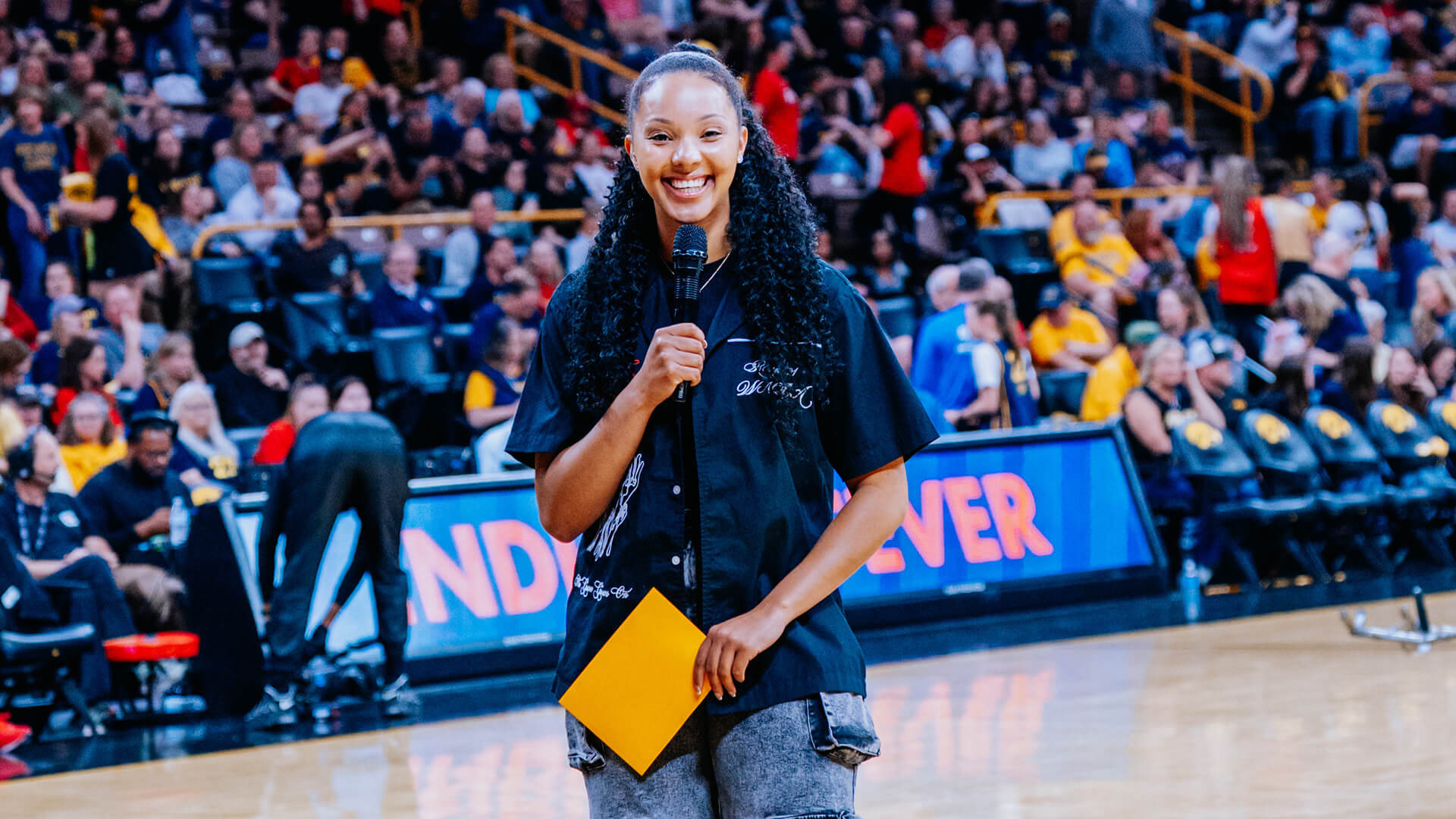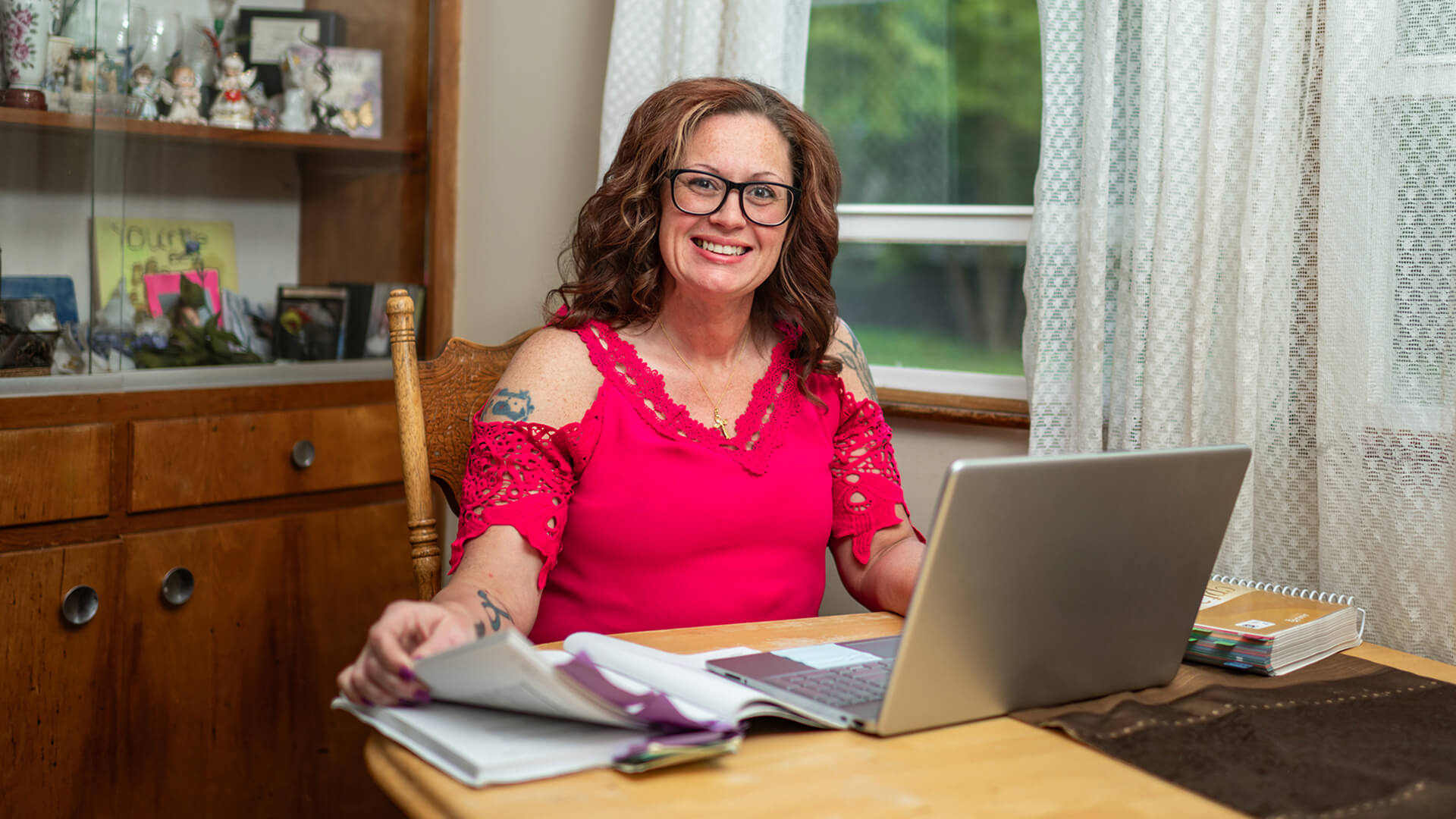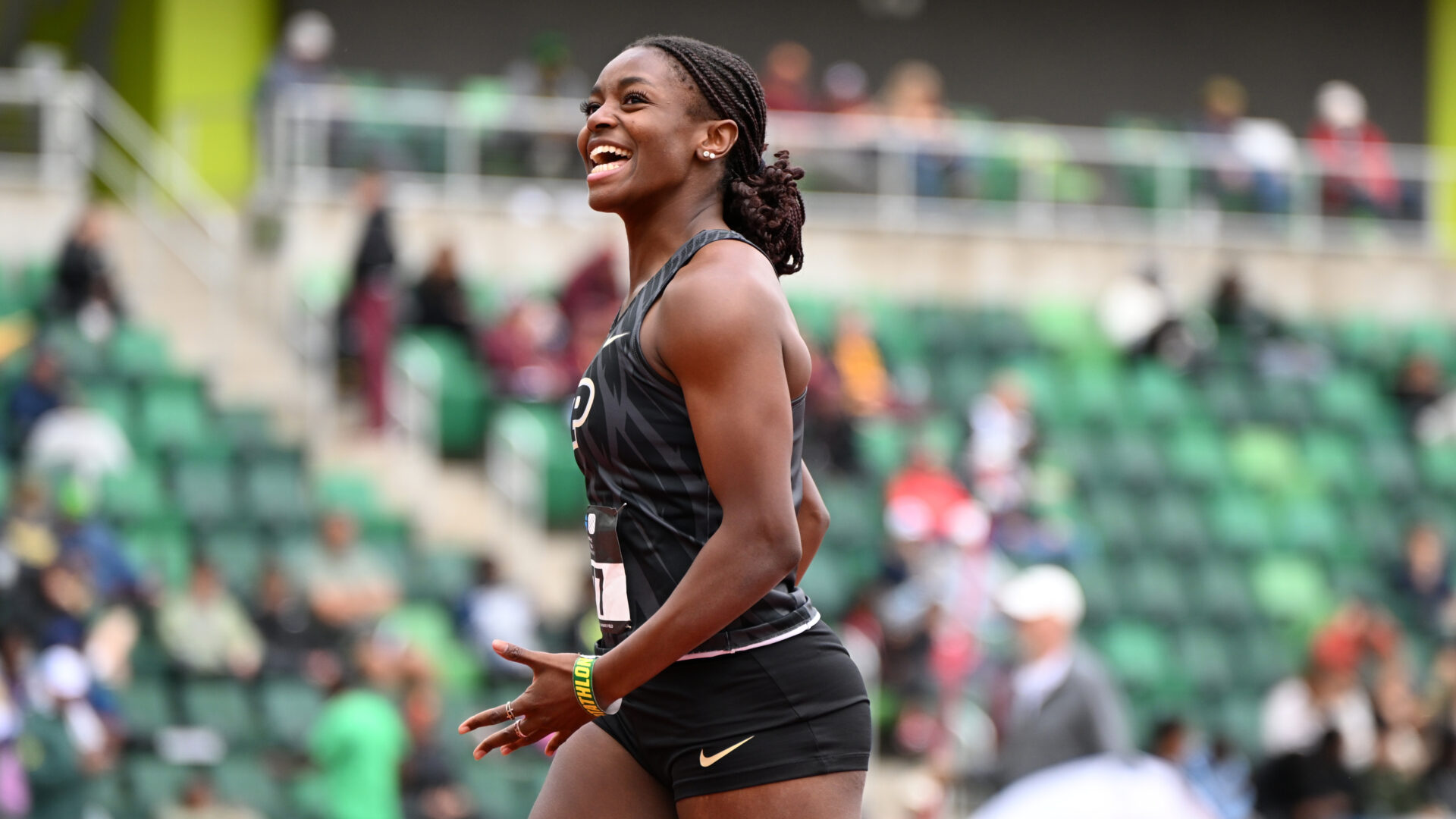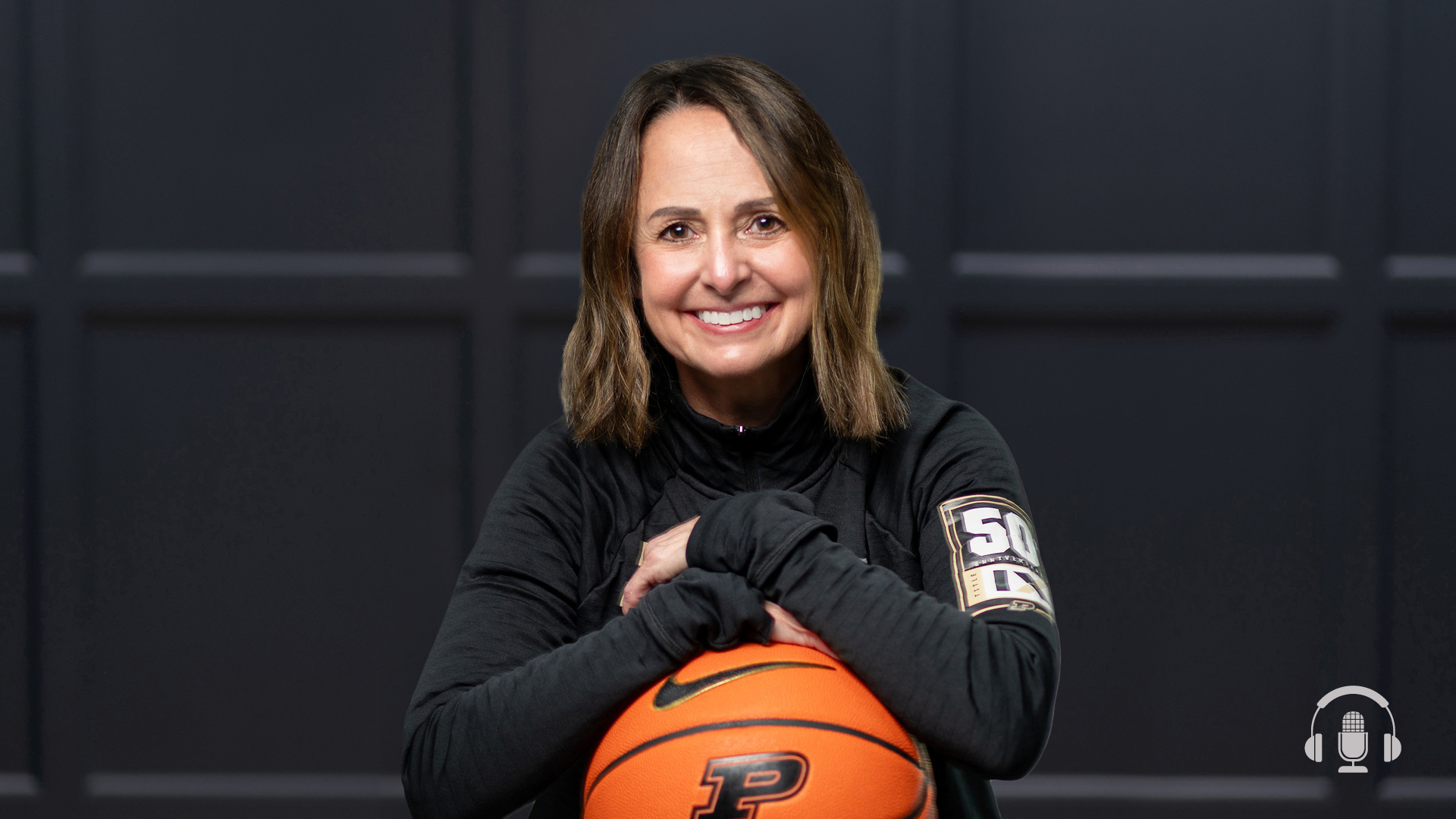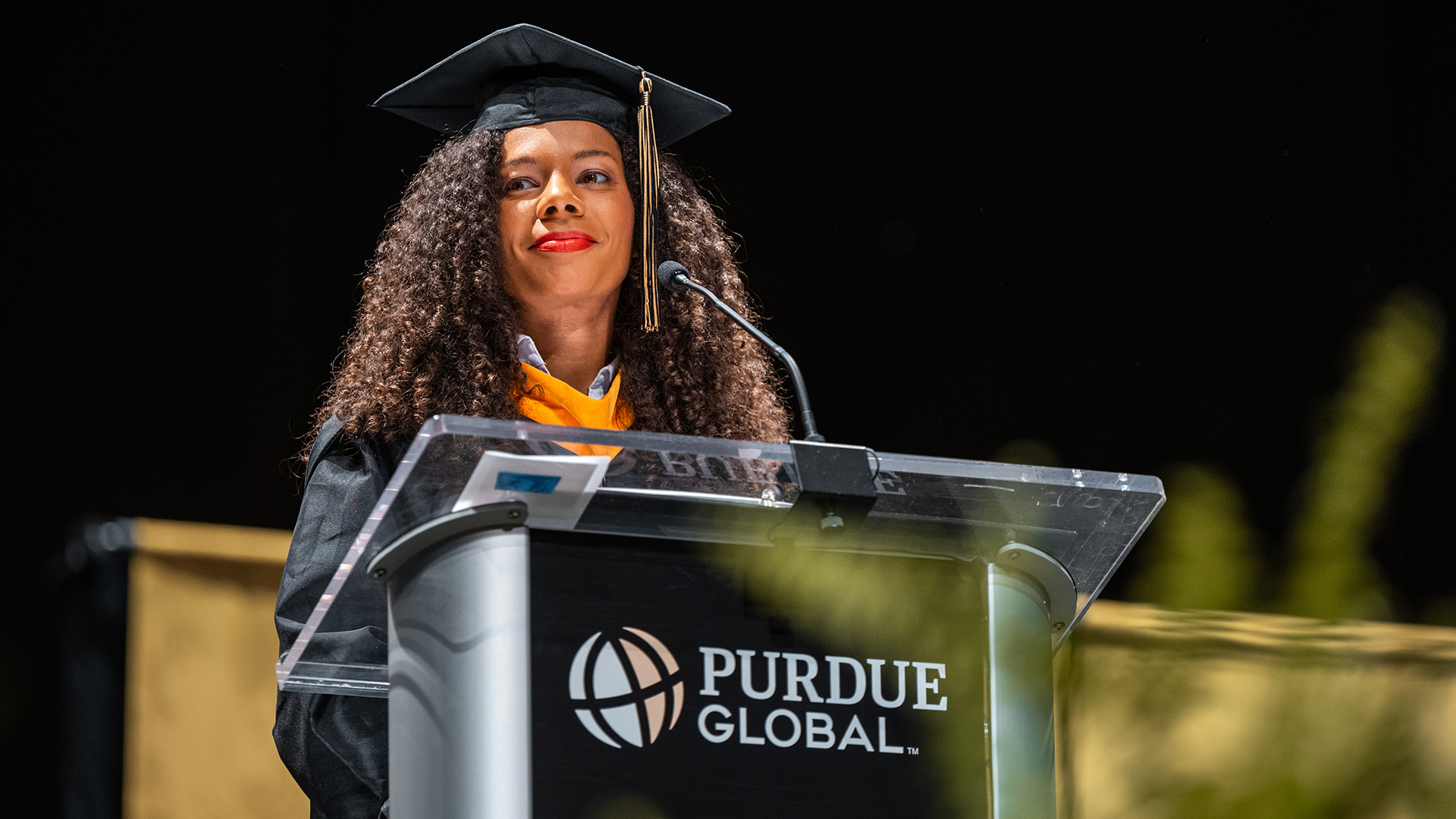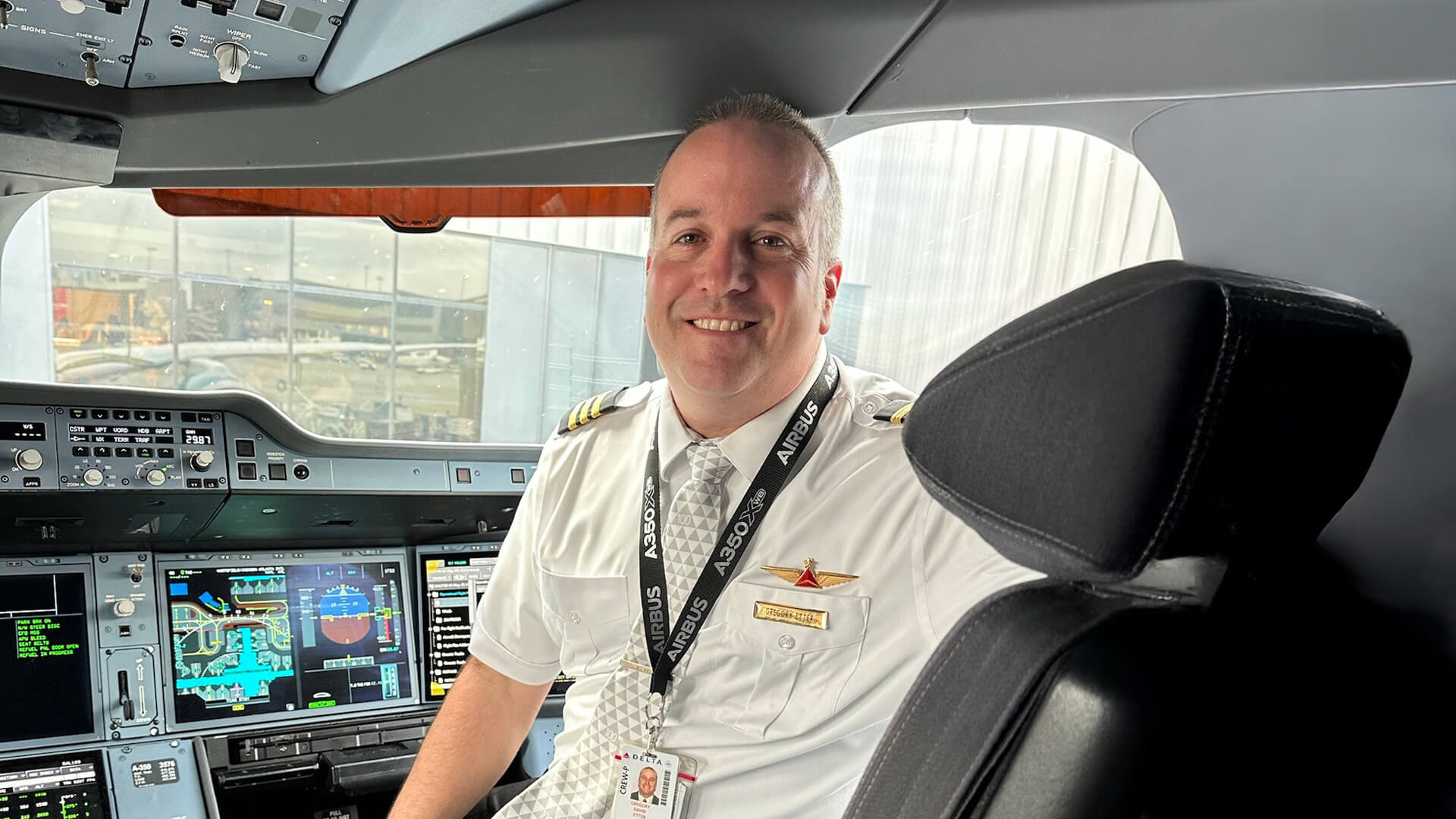Indy 500 artist moved by deep connections he observes at racetrack
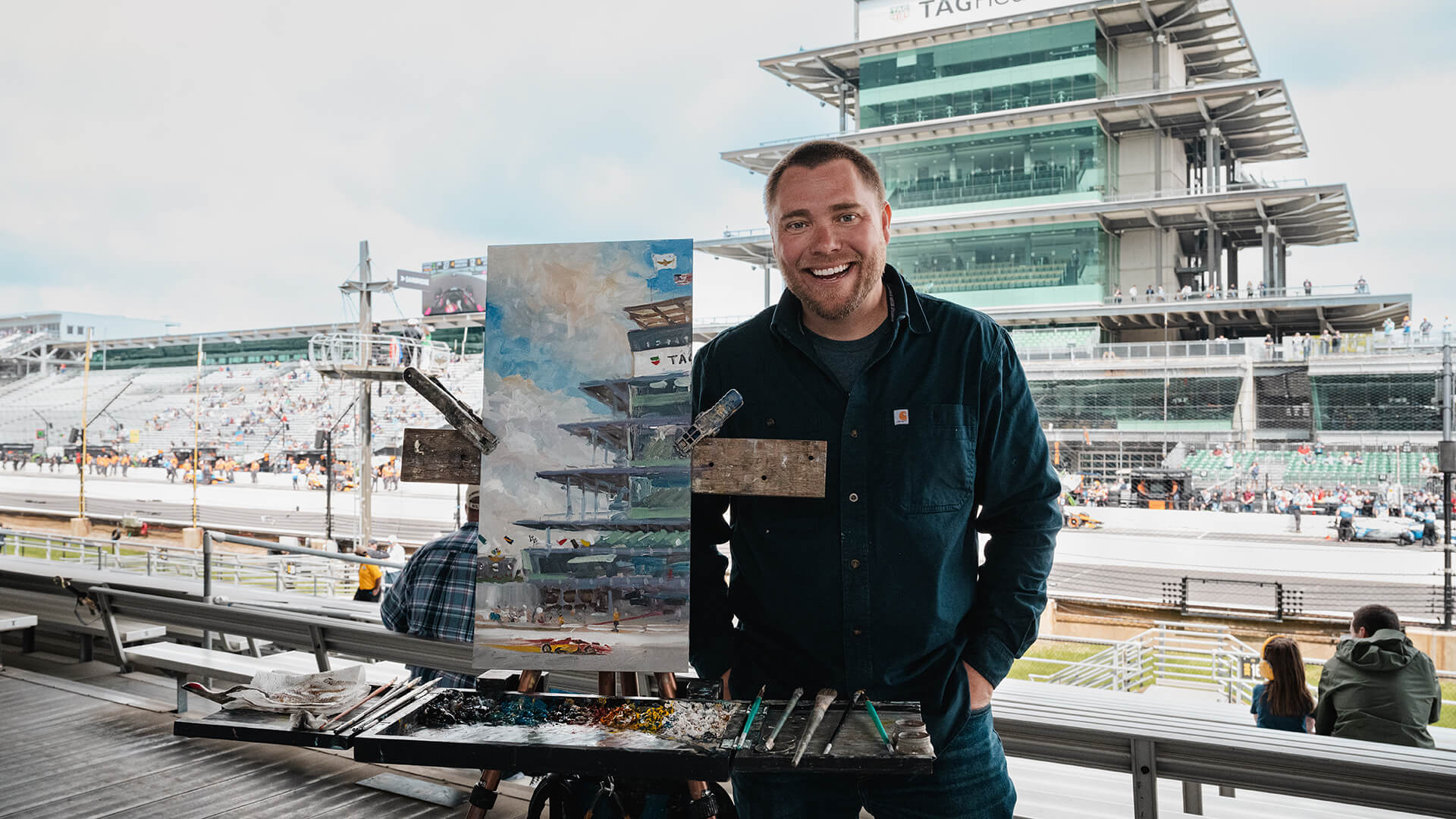
Purdue alumnus Justin Vining specializes in painting live at big events like the Indianapolis Motor Speedway, where he has worked each year since 2018. (Purdue University photo/Greta Bell)
Alumni artist Justin Vining believes the bonds people build during the month of May tie into the meaning of life
Artist Justin Vining wasn’t exactly a racing fanatic when he first sought an opportunity to paint at the Indianapolis Motor Speedway during the month of May.
Vining was aware from the very beginning that the Indianapolis 500, one of the world’s most prominent auto races, shapes the identity of the city where he resides and the state where he was born and raised. He correctly believed that it would be a successful business venture to sell the artwork he creates at the racetrack.
What he didn’t understand was how much the work would mean to him — because of how much being at the track matters to those who have shared “The Greatest Spectacle in Racing” with friends and family.
“I find a really deep sense of purpose and meaning when I paint out there,” says Vining (BA visual arts teaching K-12 ’04; BA fine arts/drawing ’04). “In a way, it has nothing to do with the paintings themselves and everything to do with the culture of what that place is.”
Everyone there has a story to tell.
Vining walks through an RV lot on the way to a practice session and passes a family where a grandfather who has attended the race annually for 60 years is now sharing that tradition with his grandkids.
He overhears a man asking security guards to allow him to sit in some roped-off seats during a practice session. It turns out that the man’s father recently died, and he flew in specifically to sit in the seats where he sat as a child when his dad would bring him to the race.
“I tear up every time I tell that story,” Vining says. “He just sat there all practice by himself in his childhood seats because his dad just passed. And that’s one story that I happened to catch. Hundreds of thousands of people go through that facility every single year. The saying that it’s so much more than racing is so true. The power of that place goes so far beyond cars driving in a circle. It ties much more into, to me, the meaning of life.”
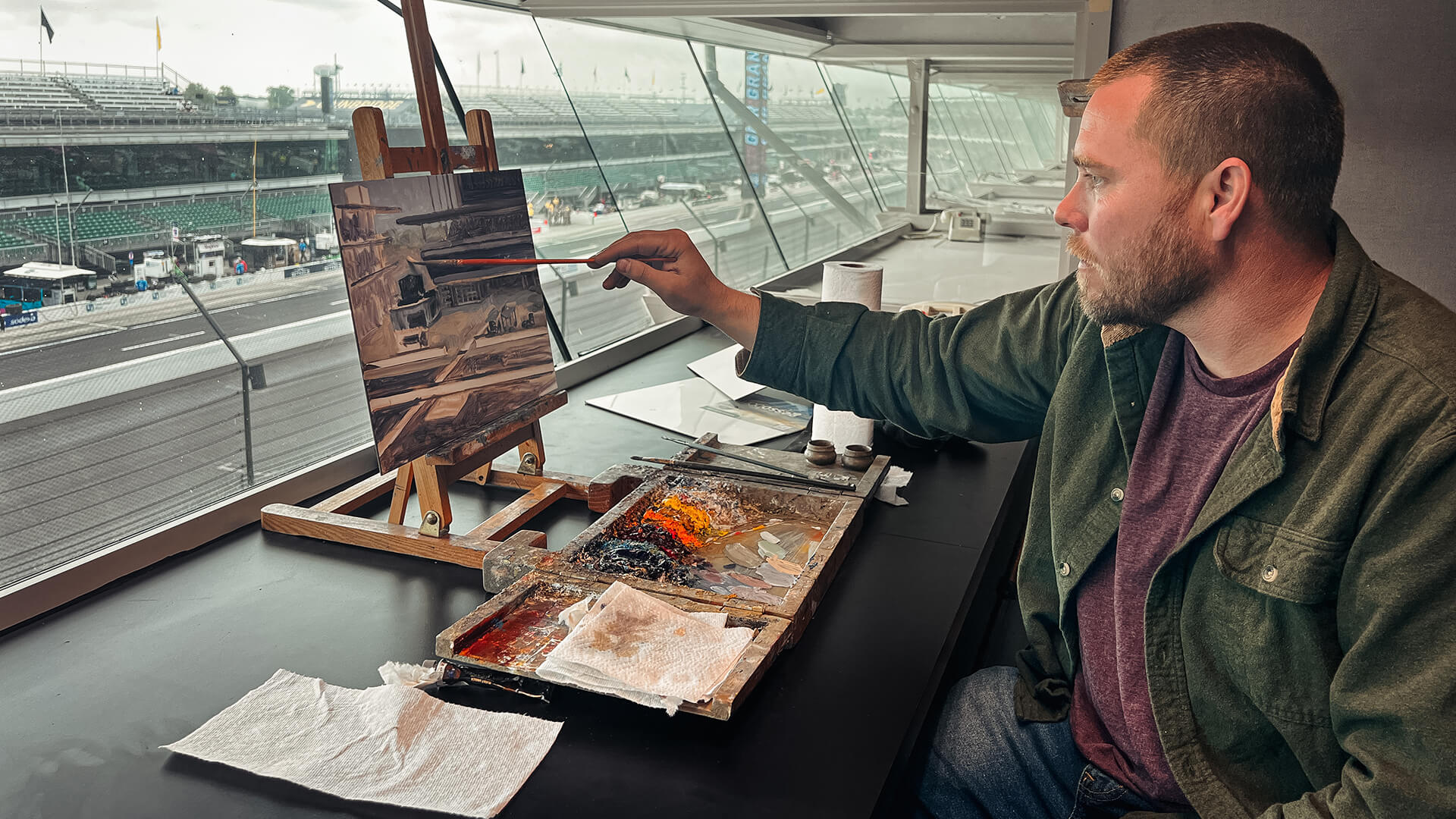
Building a legacy
Perhaps that explains why Indy 500 day has become Vining’s “single favorite day of painting all year, hands down” — as well as why his excitement seems to grow each year.
“The more I do it, the deeper it gets,” he says. “I guarantee I will get chills the first time I walk into that place this year. It seems cheesy, but I’m going to be pumped.”
Since 2018, Vining has been in attendance to paint each time the IMS gates open in May. He carries his materials into the grandstand to paint during practices where available seating is plentiful. For race day, when crowds are much larger, IMS sets him up in an inactive press box to ensure he has dedicated space for his work.
The day after the race each year, he puts the 10 to 15 pieces he painted during the practice sessions up for sale on his website. They sell out immediately.
As for the two pieces he paints each year on race day: one of sunrise on the Pagoda when the cannon blast signals that the gates are open and one of the winning driver crossing the yard of bricks? He’s never sold any of those.
“It’s not lost on me this could all go away. I hope it doesn’t, but right now I feel very, very lucky that I get to do this each year,” says Vining, who has kept those paintings to document his full body of race-day work from the event. “I wouldn’t want that legacy to be spread out amongst random places. I feel like it needs to be protected.”
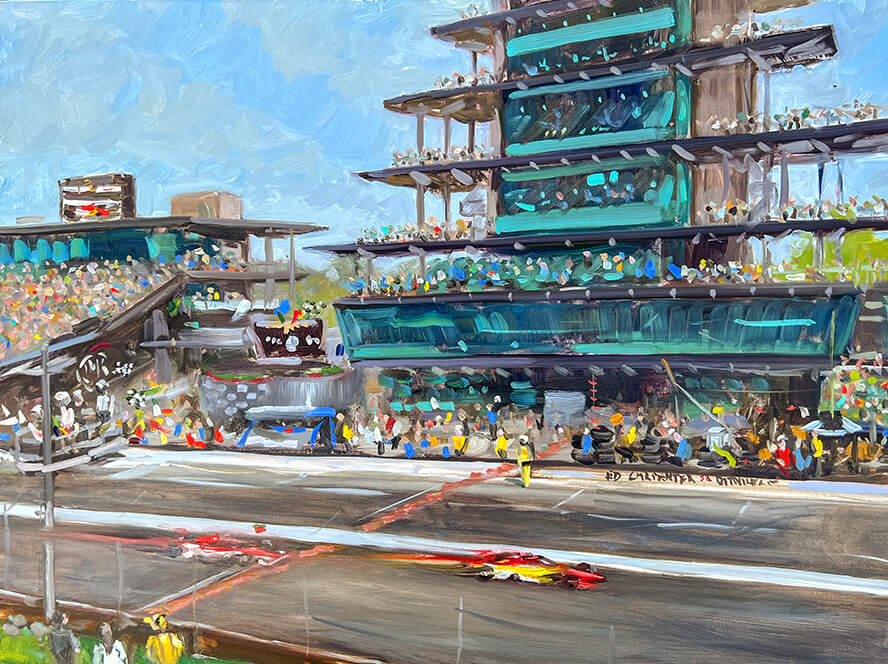


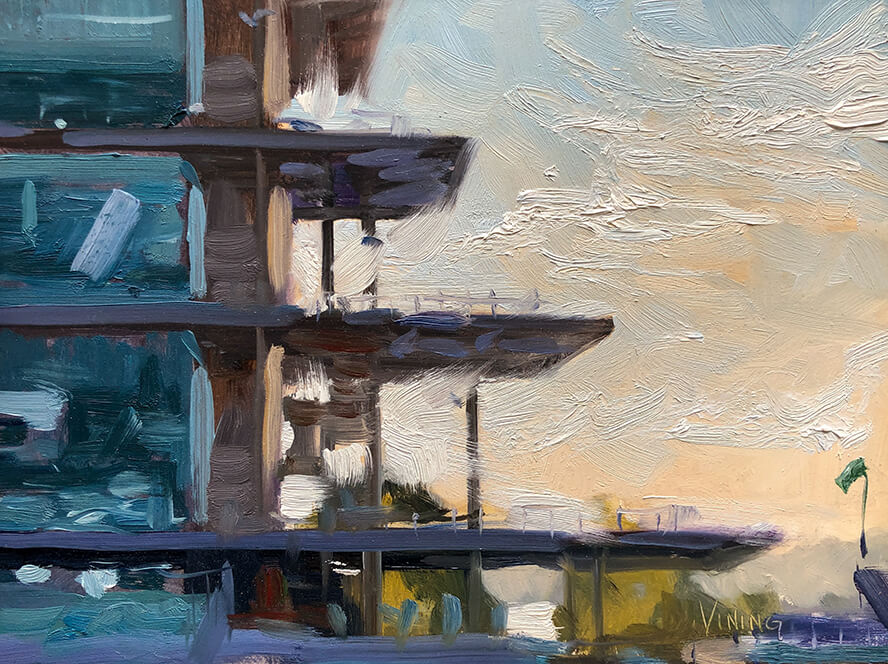

An unorthodox path
The story of how Vining became an artist who specializes in painting at live events like the Indy 500 is somewhat unusual, full of early career decisions that don’t quite seem to connect. But today he recognizes bits and pieces from each experience that contribute to his current success as a full-time artist.
Vining enhanced his artistic skills at Purdue, where a degree in art education prepared him to teach elementary art for three years in Pendleton, Indiana.
He attended Valparaiso University Law School alongside his brother, Nathan, with plans to start their own practice. Money was tight throughout law school, so Vining sold paintings to classmates to make ends meet, spawning a hustle mentality that still drives him today.
He set an aggressive goal in 2024 to sell 200 paintings in the first 200 days of the year. By early May, he had already sold 175 thanks in large part to an art show where he sold 108 pieces — including 82 on opening night.
“I adopted this mindset (last) year: I could make an excuse every single day not to make a painting, and I just don’t,” Vining says. “It’s not for the faint of heart.”
I adopted this mindset this year: I could make an excuse every single day not to make a painting, and I just don’t.
Justin Vining
BA visual arts teaching K-12 ’04;
BA fine arts/drawing ’04
The power of networking
Law school also taught Vining about the power of networking — because you never know what promising opportunity might arise once you put yourself out there. Following that mantra actually led to his first opportunity to paint a big, live event.
Back when he occupied a studio space in Indianapolis’ Harrison Center for the Arts, he heard that basketball legend Tamika Catchings was walking through the building. He decided to take advantage of the opportunity to meet the Indiana Fever legend and future Hall of Famer.
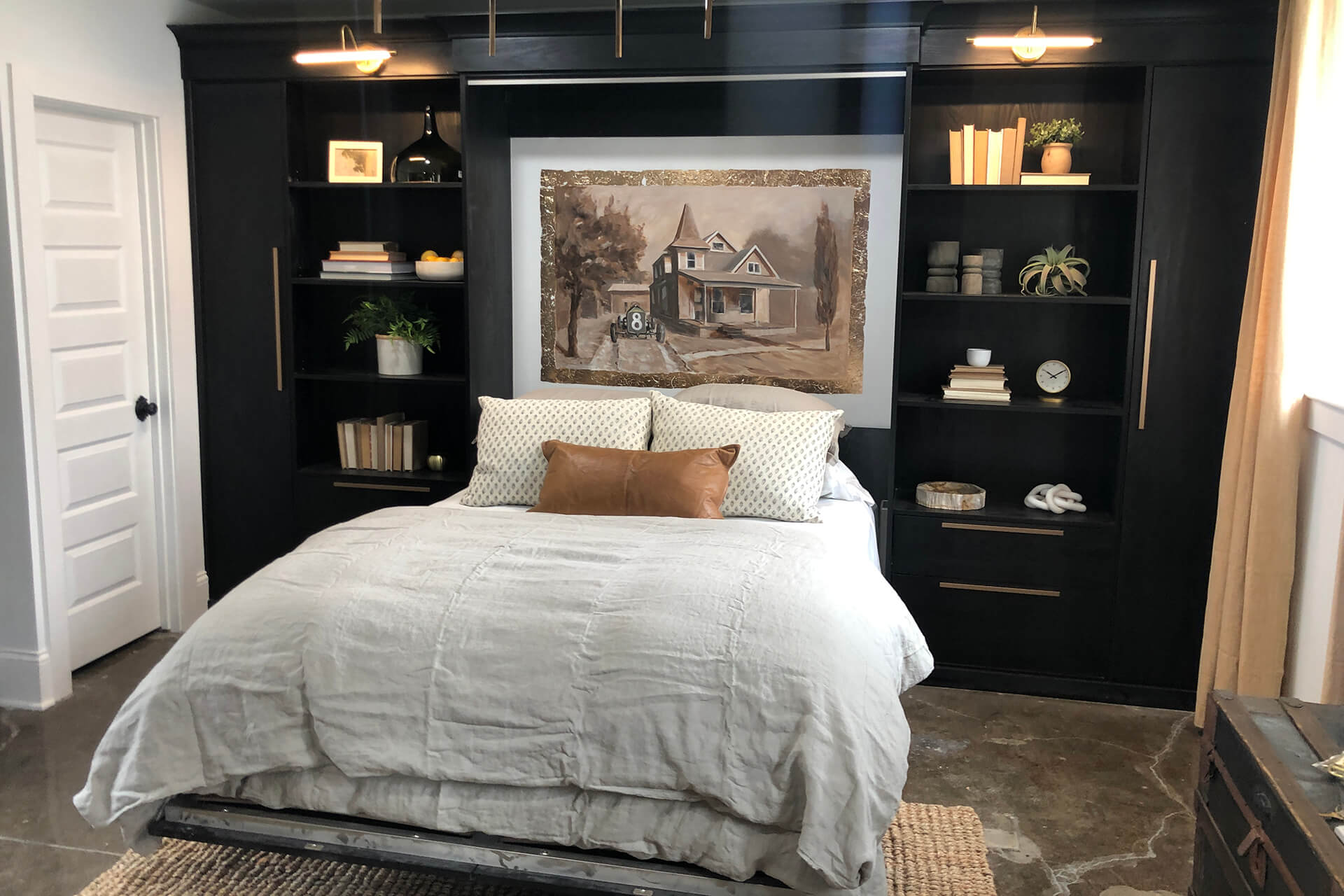
Justin Vining’s artwork was on display multiple times in the Indianapolis-based HGTV home-remodeling show “Good Bones.” (Photo courtesy of Justin Vining)
Vining struck up a conversation and learned that Catchings was preparing to open a café, Tea’s Me, just a few blocks from his house. And she just so happened to be looking for a featured artist whose work she could display in the cafe.
“I was like, ‘Hey, that can be me,’” Vining recalls. “I was the first featured artist ever in her cafe, and I helped her source the person (who) installed the hanging system there.”
A short time later, Vining accepted an opportunity to paint live from Catchings’ jersey-retirement ceremony as the Fever raised her No. 24 banner into the rafters of Bankers Life (now Gainbridge) Fieldhouse.
Vining tells a similar tale about how he and his artwork made the first of many appearances on the HGTV home-remodeling TV show “Good Bones.” Producers from the Indianapolis-based show were visiting artist Kyle Ragsdale at his Harrison Center studio, which was across the hall from Vining’s studio at the time.
“I started talking to the producers and next thing you know, I’m an extra on Season One with Kyle in one of the episodes,” Vining says. “I was actually cut out of that whole episode — I don’t think I made TV at all — but then they started using my paintings and they started putting me on TV. Then their designer MJ (Coyle) became one of my friends. MJ’s design office now is in the building I own.”
An entrepreneurial mentality
Barely a year had elapsed between the brothers passing the bar exam in 2010 and Vining deciding to pursue a career as a full-time artist. But a lot happened in a short time.
For one thing, he met his wife, Halie, who was then a junior at Butler University. He also took a professional left turn that helped him build entrepreneurial skills that directly contributed to the success of his art business.
Instead of following through on a plan to open a law practice with Nathan in Warsaw, Indiana, Vining instead accepted a lucrative opportunity to work as an account executive at Protis Executive Innovations (now Protis Global) and helped Nathan land a position there, as well.
Vining’s seven months at Protis, an Indianapolis-based headhunting firm, involved recruiting salespeople in the food and beverage industry. It was at Protis that he gained a direct understanding of the data that moves business forward.
“When we sold 82 paintings on opening night, all of that was from using a data-driven sales pricing that I learned at Protis,” Vining says.
Strategic thinking
It should come as no surprise that Vining is an avid chess player, always trying to think a few steps ahead.
Just as strategic thinking is imperative to succeed at that game, so too is it an essential ingredient in entrepreneurial success. How else could someone who grew up on a farm in tiny Etna Green, Indiana, wind up painting at major sporting events like an Indianapolis Colts football game or at the Indy 500, having his work featured on cable TV and building a successful art business after changing directions multiple times early in his professional life?
Vining acknowledges that he wouldn’t be the artist he is today without the disparate experiences that motivated him to embrace professional opportunities — and occasionally create some himself — and put in the long hours necessary to build an audience for his work.
“How I think about it in the context of my career is whether any singular thing defines my success,” Vining says. “IMS, Indiana Pacers organization, painting at Lucas Oil Stadium, all my work with HGTV — you take any one of these legs from an eight-legged table off and the table still stands. To me, it’s the compounding effect of all of these things individually starting to make real impact on people’s perception of my success.”
Connect with Justin online:
Website
Facebook
Instagram
The power of that place goes so far beyond cars driving in a circle. It ties much more into, to me, the meaning of life.
Justin Vining BA visual arts teaching K-12 ’04;
BA fine arts/drawing ’04
